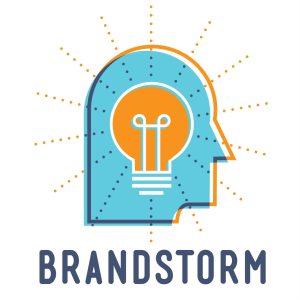
Brandstorm
Business & Economics Podcasts
Ever see a new product in a store and say, wow, I wish I would have thought of that, or how a product got its name? What does it really take to create a great marketing campaign, or why do some companies just do things better than others? Sure, there are times when all the stars align to create an overnight sensation, but typically nothing takes the market by storm without research, planning, and professionals with a road map to making it all happen. So, let’s Brandstorm.
Location:
United States
Description:
Ever see a new product in a store and say, wow, I wish I would have thought of that, or how a product got its name? What does it really take to create a great marketing campaign, or why do some companies just do things better than others? Sure, there are times when all the stars align to create an overnight sensation, but typically nothing takes the market by storm without research, planning, and professionals with a road map to making it all happen. So, let’s Brandstorm.
Twitter:
@platypus_ad
Language:
English
Contact:
262-510-2856
Email:
jim@platypus-ad.com
Episode 92: Enhancing Your Online Visibility with SEMrush
Duration:00:27:44
Episode 91: Enhancing Your Visibility Online with Global Leader SEMRush
Duration:00:15:23
Episode 90: Is Influencer Marketing Right for Your Brand with Kerry Perse
Duration:00:17:39
Episode 89: Making TV Media Buying Easier with Michael Beach at Cross Screen Media
Duration:00:20:07
Episode 88: Drone Photography Considerations with Frank Datzer
Duration:00:19:10
Episode 87: How Milwaukee Got the DNC with Megan Suardini at Visit Milwaukee
Duration:00:26:48
Episode 86: Training, Retaining & Attracting Talent to SE Wisconsin with Susan Koehn, VP, Industry & Talent Partnerships
Duration:00:23:09
Episode 85: A Corporate Gift Idea to Remember with Shahnoza Saadati
Duration:00:16:46
Episode 84: Building a Brand Through Reinvestment with Derek Collins, Co-owner of Milwaukee’s Pedal Tavern
Duration:00:16:44
Episode 83: Centralizing all Brand Communications with Online Newsrooms
Duration:00:19:35
Episode 82: Meet the Master of Direct Response Marketing, Rick Cesari
Duration:00:17:55
Episode 81: Fuel Your Business Using Testimonials with Michael Gass
Duration:00:10:15
Episode 80: Finding the Right Exhibit House with the Booth Mom
Duration:00:20:50
Episode 79: What the Secret Sauce to Chick-fil-A’s Success?
Duration:00:17:09
Episode 78: Tourism Destinations Use Podcasting for Rich, Digital Content
Duration:00:23:27
Episode 77: Uncovering, Expressing & Amplifying Your Brand’s Personality Traits with Prentice Howe
Duration:00:11:58
Episode 76: Call for Content with Michael Greenberg
Duration:00:14:46
Episode 75: Creating Valuable Niche Audiences for Advertisers with Industry Dive
Duration:00:09:14
Episode 74: Tanya Abreu on Healthcare Marketing to Women
Duration:00:18:16
Episode 73: Creating an Experiential Brand with Punch Bowl Social’s Scott Sibley
Duration:00:09:18